#Charles Augustin de Coulomb
Explore tagged Tumblr posts
Photo

Charles-Augustin de Coulomb was born on June 14, 1736. A French officer, engineer, and physicist. He is best known as the eponymous discoverer of what is now called Coulomb's law, an experimental law of physics that quantifies the amount of force between two stationary, electrically charged particles. The electric force between charged bodies at rest is conventionally called electrostatic force or Coulomb force. The SI unit of electric charge, the coulomb, was named in his honor in 1880.
#charles-augustin de coulomb#coulomb's law#electricity#coulomb force#physics#science#science history#science birthdays#on this day#on this day in science history
3 notes
·
View notes
Text

SI Derived Units: Electric Charge and the Coulomb
The named SI derived unit of the coulomb is the unit of electric charge, which can be positive or negative. The coulomb was named for Charles-Augustin de Coulomb and officially recognized as a unit in 1881, after the ohm, farad, and volt had already been recognized.
Mathematically, the coulomb is represented by the capital letter C. In base SI units it is equivalent to 1 A s. The coulomb does not have many equivalent units in other unit systems, but 1 C equals approximately 3x10^9 statC or 6.2x10^18 e, where a statC is a statcoulomb (also known as the franklin or esu), used in CGS units, and e is the elementary charge.
Sources/Further Reading: (Wikipedia: Coulomb, Electric charge - image source) (Metric System) (Rochester Institute of Technology) (Tennessee Tech)
30 notes
·
View notes
Text
Charles-Augustin de Coulomb upon discovering Coulomb's Law: the name of this can't possibly be a coincidence
4 notes
·
View notes
Text
Top 5 Inventions Related to Electricity
1. Electric Motor
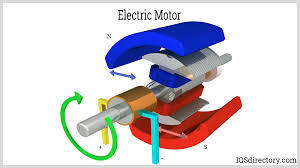
Electric motors are an integral part of modern society, powering everything from household appliances to automobiles. These devices convert electrical energy into mechanical energy, allowing for the efficient operation of a wide range of machinery. But how were electric motors created, and what were the key developments that led to their widespread use today?
Creation
The first electric motors were simple electrostatic devices described in experiments by Scottish monk Andrew Gordon and American experimenter Benjamin Franklin in the 1740s. The theoretical principle behind them, Coulomb's law, was discovered but not published, by Henry Cavendish in 1771. This law was discovered independently by Charles-Augustin de Coulomb in 1785, who published it so that it is now known with his name. Due to the difficulty of generating the high voltages they required, electrostatic motors were never used for practical purposes. But the invention of the electrochemical battery by Alessandro Volta in 1799 made possible the production of persistent electric currents.
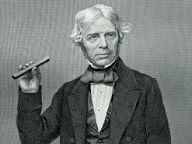
Michael Faraday
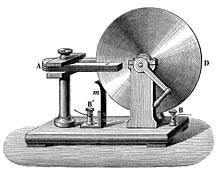
Michael Faraday dynamo
The first steps towards the creation of practical electric motors were taken in the early 19th century. In 1821, Michael Faraday discovered that an electric current could be used to produce a magnetic field. This discovery paved the way for the development of the first electric motors, which used electromagnetic principles to produce motion. Faraday demonstrated the principle of electromagnetic induction, showing that a moving magnetic field could produce an electric current in a wire. This discovery led to the development of the first practical electric generators, which could convert mechanical energy into electrical energy.

Faraday's electromagnetic experiment, 1821, the first demonstration of the conversion of electrical energy into motion

Ányos Jedlik
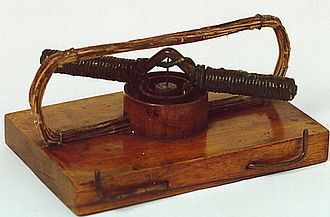
Jedlik's "electromagnetic self-rotor", 1827 (Museum of Applied Arts, Budapest). The historic motor still works perfectly today.
In 1828 Jedlik demonstrated the first device to contain the three main components of practical DC motors: the stator, rotor and commutator. The device employed no permanent magnets, as the magnetic fields of both the stationary and revolving components were produced solely by the currents flowing through their windings.
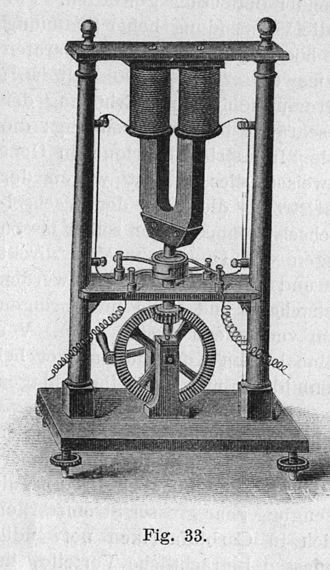
An early form of an alternating current electrical generator built by Pixii
The next major breakthrough in the creation of electric motors came in 1832, when French physicist Hippolyte Pixii developed the first electromagnetic device capable of continuous rotation. This device, known as the Pixii machine, used a rotating magnet to induce an electric current in a stationary coil, producing continuous motion. The first commutator DC electric motor capable of turning machinery was also invented in 1832 by British scientist William Sturgeon.
Other Important Events In Electric Motor
Moritz von Jacobi created the first real rotating electric motor in May 1834.
In 1855, Jedlik built a device using similar principles to those used in his electromagnetic self-rotors that was capable of useful work.
The drum rotor was introduced by Friedrich von Hefner-Alteneck of Siemens & Halske to replace Pacinotti's ring armature in 1872, thus improving the machine efficiency.
The laminated rotor was introduced by Siemens & Halske the following year, achieving reduced iron losses and increased induced voltages.
In 1880, Jonas Wenström provided the rotor with slots for housing the winding, further increasing the efficiency.
In 1873, American inventor Zenobe Gramme developed the first practical DC motor, which used a commutator to produce continuous rotation. This design was highly efficient and quickly became the standard for electric motors in a wide range of applications.
Growth
In 2022, electric motor sales were estimated to be 800 million units, increasing by 10% annually. Electric motors consume ~50% of the world's electricity.
Components
Stator
The stator is the stationary part of the electric motor. It consists of a steel frame, which houses a series of electromagnets. These electromagnets are called stator windings and are made of copper wire. When an electric current flows through the stator windings, they produce a magnetic field.
Rotor
The rotor is the rotating part of the electric motor. It is located inside the stator and is mounted on a shaft. The rotor is made of a series of electromagnets that are arranged in a specific pattern. When the electric current flows through the stator windings, it produces a magnetic field, which interacts with the magnetic field of the rotor, causing it to rotate.
Commutator
The commutator is a component that is located on the rotor shaft. It consists of a series of copper segments that are separated by insulating material. The commutator is responsible for changing the direction of the electric current as the rotor rotates. This is necessary to ensure that the rotor continues to rotate in the same direction.
Brushes
The brushes are components that are located on the stator. They are made of carbon and are in contact with the commutator. The brushes transfer the electric current from the power source to the commutator, which then transfers it to the rotor.
Bearings
The bearings are components that support the rotor shaft and allow it to rotate smoothly. They are usually made of metal and are located at both ends of the motor.
Enclosure
The enclosure is a component that covers the motor and protects it from the environment. It is usually made of metal or plastic and is designed to prevent dust, moisture, and other contaminants from entering the motor.
Advantages
Firstly, electric motors are incredibly efficient. Unlike internal combustion engines, which convert only around 20% of the energy stored in fuel into motion, electric motors are much more efficient. In fact, they can convert up to 90% of the electrical energy they receive into mechanical energy. This means that they are much more energy-efficient, resulting in lower energy costs and reduced carbon emissions.
Secondly, electric motors are extremely reliable. They have fewer moving parts than internal combustion engines, which means that there are fewer parts that can wear out or break down. This translates to lower maintenance costs and fewer breakdowns, making electric motors a more cost-effective option in the long run.
Thirdly, electric motors are much quieter than internal combustion engines. This is because they produce less noise and vibration during operation. This makes them ideal for use in a wide range of applications, from electric cars to household appliances, where noise pollution is a concern.
Fourthly, electric motors are much more environmentally friendly than internal combustion engines. As they produce no emissions during operation, they have no negative impact on the environment. This makes them ideal for use in a range of industries, from transport to manufacturing, where environmental concerns are a key consideration.
Finally, electric motors are versatile and can be used in a wide range of applications. They are used in everything from electric cars to industrial machinery and household appliances, and their adaptability means that they are likely to be used in many more applications in the future.
2. Electric Light Bulb

The invention of the electric light bulb is one of the most important developments in modern history. The ability to produce light without relying on flames or other hazardous materials revolutionized the way we live and work. The creation of the electric light bulb was a long and arduous process, with many scientists and inventors contributing to its development over the years.
Creation

Alessandro Volta
The story of the electric light bulb begins in the early 1800s, with the invention of the electric battery by Alessandro Volta. This invention made it possible to store and use electricity in new and innovative ways, and many scientists and inventors began to experiment with its applications.

Sir Humphry Davy
One of the early pioneers of electric light was Sir Humphry Davy, who in the early 1800s demonstrated the incandescent light, where a wire heated by an electric current produced light. However, this design was not practical for everyday use as the wire would quickly burn out.

It wasn't until the late 1800s that Thomas Edison was able to develop a commercially viable electric light bulb. Edison began experimenting with electric lighting in the 1870s, and by 1879 he had developed a carbon filament that was capable of withstanding the heat and producing light for an extended period of time. Edison's breakthrough came through his development of a vacuum pump that could remove air from the bulb, which greatly reduced the amount of heat and prevented the filament from burning out. He also experimented with different materials for the filament, finally settling on carbonized bamboo.
Edison's first public demonstration of his electric light bulb took place in December of 1879, and it quickly became clear that this invention was going to change the world. Edison founded the Edison Electric Light Company and began installing electric lighting systems in homes, businesses, and public spaces around the country.
Growth
The electric light bulb was a major breakthrough in human history, paving the way for many other technological developments. With the ability to produce light on demand, people could work and play long into the night, and entire industries were created around the production and distribution of electricity. Today, the electric light bulb is still an essential part of modern life, although it has evolved significantly since its early days. Modern LED bulbs are much more efficient and long-lasting than Edison's original design, and they are used in everything from streetlights to smartphones.
3. Electric Battery

The electric battery is a device that converts chemical energy into electrical energy, and it has become an essential component of modern life. From powering our smartphones and laptops to enabling electric cars to run, the electric battery has revolutionized the way we use and consume energy.
Creation

Benjamin Franklin
Benjamin Franklin first used the term "battery" in 1749 when he was doing experiments with electricity using a set of linked Leyden jar capacitors. Franklin grouped a number of the jars into what he described as a "battery", using the military term for weapons functioning together. By multiplying the number of holding vessels, a stronger charge could be stored, and more power would be available on discharge.

Alessandro Volta

Italian physicist Alessandro Volta demonstrating his pile to French emperor Napoleon Bonaparte
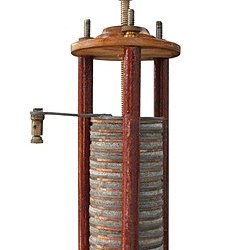
A voltaic pile, the first battery
The history of the electric battery dates back to the late 1700s, when Italian physicist Alessandro Volta discovered the principle of the electric cell. Volta's invention consisted of two different metals, typically copper and zinc, which were separated by a moistened piece of cardboard or paper. This simple device, known as the "Voltaic pile," generated a steady stream of electricity.
Volta's invention was soon improved upon by other inventors, including William Cruickshank and John Daniell, who developed more practical batteries. In 1836, John F. Daniell invented the Daniell cell, which used a copper sulfate solution and a zinc electrode to produce electricity. This battery was used extensively in telegraphy, which was the first major application of electricity in communication.

Georges Leclanché
In the late 1800s, another important development in the field of batteries occurred. French engineer Georges Leclanché developed the Leclanché cell, which used a zinc electrode and a manganese dioxide electrode in a solution of ammonium chloride. The Leclanché cell was smaller, more reliable, and less expensive than previous batteries, and it became the standard battery for telegraphy and early electric lighting. In the early 1900s, American inventor Thomas Edison developed the nickel-iron battery, which was used in electric cars and trucks. Edison's battery was durable, rechargeable, and long-lasting, but it was also heavy and expensive, and it ultimately lost out to the lead-acid battery, which was cheaper and easier to manufacture.
Modern Battery
The modern electric battery, which is used in everything from cell phones to electric cars, is a much more sophisticated device than its early predecessors. Modern batteries are made up of many individual cells, each of which contains an anode, a cathode, and an electrolyte. The anode is typically made of lithium or another metal, while the cathode is made of a metal oxide. The electrolyte is a liquid or gel that allows ions to flow between the anode and the cathode.
Growth
Between 2010 and 2018, annual battery demand grew by 30%, reaching a total of 180 GWh in 2018. Conservatively, the growth rate is expected to be maintained at an estimated 25%, culminating in demand reaching 2600 GWh in 2030. In addition, cost reductions are expected to further increase the demand to as much as 3562 GWh.
The development of modern batteries has been driven by a combination of research and development, technological advancements, and market demand. In recent years, there has been a surge of interest in developing new types of batteries that are more efficient, more powerful, and more environmentally friendly.
Chemistry
Electric batteries convert chemical energy into electrical energy by means of a redox reaction. In a redox reaction, one substance is oxidized, losing electrons, while another substance is reduced, gaining electrons. This transfer of electrons creates an electric current, which can be used to power electronic devices. The basic components of an electric battery are an anode, a cathode, and an electrolyte. The anode is the negative electrode, while the cathode is the positive electrode. The electrolyte is a solution or a solid material that allows ions to move between the anode and cathode. When a battery is charged, electrons are removed from the anode and transferred to the cathode through the external circuit. This creates a buildup of positively charged ions at the cathode and negatively charged ions at the anode. When the battery is discharged, the opposite happens, and the ions flow from the cathode to the anode, creating an electric current.
There are many different types of electric batteries, each with its own unique chemistry. The most common type of battery is the lead-acid battery, which is used in cars and other applications. Lead-acid batteries consist of lead dioxide as the positive electrode, lead as the negative electrode, and a sulfuric acid electrolyte. When the battery is charged, lead dioxide is reduced to lead, and lead is oxidized to lead dioxide when the battery is discharged.
Another common type of battery is the lithium-ion battery, which is used in smartphones, laptops, and electric cars. Lithium-ion batteries use lithium cobalt oxide as the positive electrode, graphite as the negative electrode, and a lithium salt electrolyte. When the battery is charged, lithium ions move from the positive electrode to the negative electrode, where they are stored in the graphite. When the battery is discharged, the lithium ions move back to the positive electrode, creating an electric current. Other types of batteries include nickel-cadmium batteries, nickel-metal hydride batteries, and sodium-ion batteries. Each of these batteries has its own unique chemistry, which determines its performance, cost, and environmental impact.
4. Electric Trolley
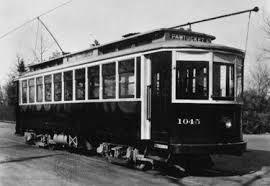
The electric trolley is a revolutionary invention that changed the way people travel in cities. It is a form of public transportation that operates on rails and is powered by electricity. The invention of the electric trolley can be attributed to the efforts of one man, Frank J. Sprague.
Creation
The first working trolley pole was developed and demonstrated by Charles Van Depoele, in autumn 1885 but the use of overhead wire in a system of current collection is reputed to be the 1880 invention of Frank J. Sprague.
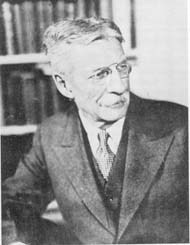
Frank J. Sprague
Frank J. Sprague was born in 1857 in Milford, Connecticut. He was a brilliant inventor and electrical engineer, who made many contributions to the field of electricity. In the late 19th century, he began working on the development of an electric streetcar system, which would be powered by an overhead wire.
Sprague's first electric streetcar system was installed in Richmond, Virginia, in 1888. The system consisted of a single trolley car that was powered by a generator located at the end of the line. The car was equipped with an electric motor, which was connected to the overhead wire by a trolley pole. The trolley pole was a long pole that extended from the roof of the car and made contact with the overhead wire.
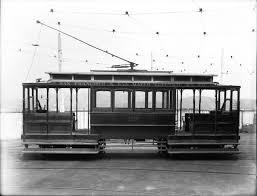
Sprague's system was a great success, and it soon caught the attention of other cities. Over the next few years, Sprague installed electric streetcar systems in several other cities, including Brooklyn, New York; Chicago, Illinois; and Boston, Massachusetts. By 1890, there were over 100 electric streetcar systems operating in the United States.
Advantages
The electric trolley had several advantages over the horse-drawn streetcars that were in use at the time. The electric trolley was faster and more reliable than the horse-drawn streetcar. It was also cleaner, as it did not produce the waste and odor associated with horse-drawn transportation. In addition, the electric trolley was quieter than the horse-drawn streetcar, which made it more pleasant for passengers.
Growth
The electric trolley quickly became a popular form of transportation in many cities. It was used by people from all walks of life, including businessmen, workers, and tourists. The electric trolley helped to make cities more accessible, and it played an important role in the development of urban transportation.
5. Electric Power Grid

The development of the electric power grid was a pivotal moment in the history of electricity. Before the grid was created, electricity was only available to a select few, mainly the wealthy, who could afford their own generators and power plants. However, the power grid changed all that, allowing for electricity to be distributed over long distances and reaching millions of people.
Creation

Nikola Tesla
The idea for the electric power grid was first proposed in the late 19th century by a few pioneering engineers and scientists who saw the potential for electricity to revolutionize society. These early pioneers recognized that if they could develop a system to transmit electricity over long distances, they could bring electricity to homes, businesses, and industries around the world.
One of the key figures in the development of the electric power grid was Nikola Tesla. Tesla was a Serbian-American inventor, electrical engineer, and physicist who is best known for his work on alternating current (AC) electricity. In the late 1880s, Tesla began working on the design of a system to transmit AC electricity over long distances, and in 1891, he patented the design for the first AC power transmission system. Despite the groundbreaking work of Tesla and other pioneers, the development of the electric power grid was slow at first. The early power grids were small and localized, and they were often owned and operated by private companies or municipalities. It wasn't until the early 20th century that the idea of a national power grid began to take shape.
One of the key drivers of the national power grid was the need to bring electricity to rural areas. In the early 20th century, rural areas were still largely without electricity, and many farmers and rural residents were forced to rely on kerosene lamps and other sources of light and heat. The federal government recognized the need to bring electricity to these areas, and in 1935, President Franklin D. Roosevelt signed the Rural Electrification Act, which provided funding for the construction of electric power lines and other infrastructure in rural areas.
Growth
The construction of the national power grid accelerated in the post-World War II era, as the demand for electricity increased dramatically. The power grid grew in size and complexity, and new technologies were developed to improve the efficiency and reliability of the system. Today, the electric power grid is a vast network of power plants, transmission lines, and distribution networks that stretches across the United States and around the world.
Advantages
The electric power grid has had a profound impact on society, enabling countless technological advancements and improving the quality of life for millions of people. From powering our homes and businesses to fueling the growth of new industries, the electric power grid is a critical part of modern life, and its development stands as a testament to the power of human ingenuity and innovation.
#Top#5#Electricity#Electrical#Inventions#Electronic#Light bulb#Battery#Dynamo#Motor#Nikola Tesla#Benjamin Franklin#Thomas Edison#Best#Creations
1 note
·
View note
Text
Coulomb's Law
Coulomb’s Law is vitally important in the field of electrostatics as it describes the force between two charged particles. This principle is named after the French physicist Charles-Augustin de Coulomb, who formulated the law in the late 18th century. Basic Understanding of Coulomb’s Law Coulomb’s Law states that the electrostatic force between two charged particles is directly proportional to…
View On WordPress
0 notes
Text
Charles-Augustin de Coulomb
Charles-Augustin de Coulomb (14 de junio de 1736-París, Francia; 23 de agosto de 1806) fue un matemático, físico e ingeniero francés. Se le recuerda por haber descrito de manera matemática la ley de atracción entre cargas eléctricas. En su honor, la unidad de carga eléctrica lleva el nombre de coulomb (C). Entre otros estudios se le debe la teoría de la torsión recta y un análisis del fallo del…

View On WordPress
#brújulas magnéticas#cargas electricas#Charles-Augustin de Coulomb#electricidad#electromagnetismo#ey de atracción#magnetismo#personajes
0 notes
Text
Electricity

Electric charge
These phenomena were investigated in the late eighteenth century by Charles-Augustin de Coulomb, who deduced that charge manifests itself in two opposing forms. The magnitude of the electromagnetic force, whether attractive or repulsive, is given by Coulomb's law, which relates the force to the product of the charges and has an inverse-square relation to the distance between them.
In comparison with the much weaker gravitational force, the electromagnetic force pushing two electrons apart is 1042 times that of the gravitational attraction pulling them together.
Charge originates from certain types of subatomic particles, the most familiar carriers of which are the electron proton. Electric charge gives rise to and interacts with the electromagnetic force, one of the four fundamental forces of nature. Experiment has shown charge to be a conserved quantity, that is, the net charge within an electrically isolated system will always remain constant regardless of any changes taking place within that system.
By convention, the charge carried by electrons is deemed negative, and that by protons positive, a custom that originated with the work of Benjamin Franklin The amount of charge is usually given the symbol Q and expressed in coulombs each electron carries the same charge of approximately −1.6022×10−19 coulomb. Charge is possessed not just by matter, but also by antimatter antiparticle bearing an equal and opposite charge to its corresponding particle.
:3 An electric field is created whenever there is a difference in potential energy across some boundary separating regions where different amounts of electrical charge reside. For example, consider a sphere containing both positively and negatively charged ions. When the sphere is placed into water, the positively charged ions become immersed while the negatively charged ones remain above the surface. As a result, the region inside the sphere becomes more highly charged than outside, creating an electric field around the sphere.
Electric current
The movement of electric charge is known as an electric current, the intensity of which is usually measured in amperes. Electric current can flow through some things, electrical conductors, but will not flow through an electrical insulator By historical convention, a positive current is defined as having the same direction of flow as any positive charge it contains, or to flow from the most positive part of a circuit to the most negative part. Current defined in this manner is called conventional current. The motion of negatively charged electrons around an electric circuit, one of the most familiar forms of current, is thus deemed positive in the opposite direction to that of the electrons.
electric arc provides an energetic demonstration of electric current The process by which electric current passes through a material is termed electrical conduction, and its nature varies with that of the charged particles and the material through which they are travelling. While the particles themselves can move quite slowly, sometimes with an average drift velocity only fractions of a millimetre per second, electric field that drives them itself propagates at close to the speed of light, enabling electrical signals to pass rapidly along wires.
in 1800, a process now known as electrolysis. He had discovered electromagnetism, a fundamental interaction between electricity and magnetics. The level of electromagnetic emissions generated by electric arcing is high enough to produce electromagnetic interference, which can be detrimental to the workings of adjacent equipment.
Alternating current is affected by electrical properties that are not observed under steady state direct current, such as inductance capacitance :223–25 These properties however can become important when circuitry is subjected to transients, such as when first energised.
Current is also classified according to other physical characteristics, including type, magnitude, and frequency. Type refers to whether the current flows continuously or periodically. Magnitude describes the amount of power delivered by the current. Frequency measures the number of cycles completed each unit of time. For instance, 60 Hz AC has a frequency of 0.5 cycle/second, whereas 50 Hz AC has a frequency twice as great, 1 cycle/second. In practice, all three types may vary simultaneously.
Electric field
The concept of the electric field was introduced by Michael Faraday. The electric field acts between two charges in a similar manner to the way that the gravitational field acts between two masses, and like it, extends towards infinity and shows an inverse square relationship with distance.
An electric field is defined as the strength of the interaction between two point-like sources of opposite sign separated by some distance r. It has units of newtons per coulomb and its magnitude depends upon the number of electrons present in each source. For example, if we have one electron located near the origin and another nearby, then their combined electrostatic potential energy will be proportional to 1/.
Electric potential
A pair of AA cells. A small charge placed within an electric field experiences a force, and to have brought that charge to that point against the force requires work. It is usually measured in volts, and one volt is the potential for which one joule of work must be expended to bring a charge of one coulomb :494–98 This definition of potential, while formal, has little practical application, and a more useful concept is that of electric potential difference, and is the energy required to move a unit charge between two specified points. An electric field has the special property that it is conservative, which means that the path taken by the test charge is irrelevant: all paths between two specified points expend the same energy, and thus a unique value for potential difference may be stated.
This reference point naturally takes the name earth ground. Electric potential is a scalar quantity, that is, it has only magnitude and not direction. They must also lie parallel to a conductor's surface, otherwise this would produce a force that will move the charge carriers to even the potential of the surface.
In physics, electricity or electromagnetism are physical phenomena involving charges moving under the influence of forces. In classical mechanics, these forces can be described using Newton's laws of motion; however, when dealing with electrical systems, such as circuits, Maxwell's equations provide a better model. These describe how electromagnetic fields behave, including their effects on matter. Electricity is often used synonymously with magnetism, although they are distinct concepts.
Read our article about Electrical Motor.
1 note
·
View note
Quote
The French Revolution followed a similar pattern. It did not bear the marks of a unanimous popular movement. It was principally members of the bourgeoisie and some aristocrats who initiated it at the meeting of the Estates-General. The works of Augustin Cochin aim to demonstrate that the revolutionary intention was already present in the selection of delegates to the Estates-General. The most informed observers of the time portrayed the French Revolution as a conspiracy. Even if it escaped the control of those who instigated it, the Revolution never took on a popular form. It remained a bourgeois phenomenon, replacing the power derived from birth with that derived from money. It instituted censitary suffrage, which remained the dominant form of suffrage into the nineteenth century. It abolished the privileges of the guilds in order to give free range to the capitalists. It abolished the privileges of the peasantry in order to give the industrialists cheap labor.
Christophe Buffin de Chosal, Charles Coulombe, and Ryan Plummer
* censitary: assess for tax (Latin)
2 notes
·
View notes
Text
Charles Augustin de Coulomb Hakkında Bilimsel Bilgiler
Charles Augustin de Coulomb Hakkında Bilimsel Bilgiler
Charles Augustin de Coulomb, 14 Haziran 1736 yılında Fransa’da doğmuştur. Batı Hint adalarında 9 sene askeri mühendis adında çalışmıştır. Sağlığının bozulması nedeniyle Fransa’ya geri dönmüştür. Fransız devrimi ortaya çıkınca Blois’da ufak bir evde yaşayarak tüm zamanını bilimsel araştırmalara ayırmıştır. 1802 senesinde ise halk eğitimi müfettişliğine getirilmiştir.
Charles Augustin de…
View On WordPress
#Bilim - Bilimsellik#Bilim Adamı#Bilim adamları - Bilimsel#Bilim İnsanı - Bilimsel#Bilim Sitesi - BilimSitesi#Charles Augustin de Coulomb#Charles Augustin de Coulomb Hakkında#Charles Augustin de Coulomb Kimdir#TeknolojiSitesi
0 notes
Text
Andei forjando um resquício teu e uma parte esquecida de mim, tente isso reavivar aquela centelha de saudades que já me carbonizou um dia! Eu não digo pelos dias idos, pelos abraços que já esfriaram ou pelos beijos dissipados. Te fiz presente e mim pela sua essência, essa piada misteriosa que pulsa dentro do teu peito e que faz um carnaval nas minhas avenidas. Isso de passar meio incólume pela vida das pessoas não existe! As pessoas são asteroides e corpos celestes que coexistem em um universo paralelo que não é regido por leis gravitacionais. Logo, as colisões são inevitáveis. A energia dissipada também. Então, apesar de nossa colisão ter sido antiga, tem uma parte da tu energia nuclear impregnada nos meus átomos. Ainda tenho teu cheiro, ainda sou capaz de reconstituir teu toque, a textura da tua voz, teu olhar meigo me dizendo que havia muito mais do que uma guria educada e de vestimenta rebelde ali. A gente realmente se tocou! E isso desmistificou minha teoria de que "nada se toca, então, o contato físico teria que ser nulo." Repulsão Elétrica foi só uma teoria física elaborada e 1783 por Charles Augustin de Coulomb para facilitar o desenvolvimento do estudo da eletricidade. Que se dane ele e a força elétrica de cargas puntiformes. A gente se tocou. Colidimos. Liberamos energia suficiente para criar um buraco negro. E aqui, distantes fisicamente, essa lágrima de saudades está engolindo todo o misto de sentimentos que me invade, deixando apenas o desejo de te sentir novamente.
2 notes
·
View notes
Photo

Charles-Augustin de Coulomb was born on June 14, 1736. A French officer, engineer, and physicist. He is best known as the eponymous discoverer of what is now called Coulomb's law, an experimental law of physics that quantifies the amount of force between two stationary, electrically charged particles. The electric force between charged bodies at rest is conventionally called electrostatic force or Coulomb force. The SI unit of electric charge, the coulomb, was named in his honor in 1880.
#charles coulomb#charles-augustin de coulomb#coulomb's law#electrostatic force#physics#physicists#science#science history#science birthdays#on this day#on this day in science history
0 notes
Photo


Coulomb’s Law was formulated by physicist Charles-Augustin de Coulomb.
#etuitions#sciencetuitions#coulombs#sciencetuition#onlinetuitions#onlineclasses#cbseboard#cuet2022#college admissions#exampreparation#monday
1 note
·
View note
Video
Da série: Eletromagnetismo. Eletricidade. Eletrostática. Cargas Elétricas. Formas de Eletrização. Eletrização por Atrito. Polarização das Cargas Elétricas. Repulsão de Cargas. Lei de Coulomb Eletrostática é o ramo da eletricidade que estuda as propriedades e o comportamento de cargas elétricas em repouso. A Lei de Coulomb é uma lei da física que descreve a interação eletrostática entre partículas eletricamente carregadas. Foi formulada e publicada pela primeira vez em 1783 pelo físico francês Charles Augustin de Coulomb e foi essencial para o desenvolvimento do estudo da Eletricidade. Via Série de Vídeos: Universo Mecânico Participe do grupo: Ciência e Materialismo Dialético SIGA: Ilya Prigogine e Estruturas Dissipativas Acompanhe a GIFs de Física nas outras plataformas! YOUTUBE: https://goo.gl/aLHvwr INSTAGRAM: https://www.instagram.com/gifs.de.fisica/ TUMBLR: https://gifsdefisica.tumblr.com/ TWITTER: https://twitter.com/gifsdefisica/ GIPHY: https://giphy.com/channel/gifisica BLOG: http://instabilidadesveladas.blogspot.com.br/ E-MAIL: [email protected] #GIFísica #Física #Ciência #Eletromagnetismo #LeideCoulomb #ForçaElétrica #Eletricidade #Eletrostática https://www.instagram.com/p/BqSUp-qD0y1/?utm_source=ig_tumblr_share&igshid=1ik06fs8bnxcm
1 note
·
View note
Video
Gims - Immortel (Music Video) from Jeremie Levypon on Vimeo.
Réalisé par Jérémie Levypon - (@jeremielevypon) Produit par Dissidence Producteurs : Antoine Fritsch, Victor Fabbretti, Rémi Danino Directrice de production : Louise Tressens
1er ass réal : Charles Portier 2nd ass réal : Hugo Lebaillif 3e ass réal : Pierre-Marie Caloni Directeur de casting : Hugo Lebailif
Directeur de la photographie : Steve Annis Steadicam : Sacha Naceri DIT : Léonard Rollin 1er ass caméra : Maxime Beauquesne 2nd ass caméra : Emmanuelle Benayoun et Zoé Mention (caméra B) 3e ass caméra : Adrien Bellier
Régisseur Général : Jérome Albertini Régisseuse Adjointe : Charlotte Schaeffer Assistant régisseur adjoint : Robert Turel Assistant régisseur adjoint : Ernest Bouvier Assistant régisseur adjoint : Jules Charpentier
Chef machiniste : Thibaut Guénois Machiniste : Morgan Dandre Machiniste : Guillaume Grandin Machiniste : Laurent Guibert Opérateur Technocrane : Antoine Vidal
Chef Électricien : Nicolas Cadot Électricien : Kevin Fermaud Électricien : Alexei Nikichine Électricien : Thomas Coulomb Électricien : François Tillot (prélight)
Chef décoratrice : Laure Girardeau Chef décorateur : Antoine Rivière Assistant déco : Franck Gourdon Rippeur : Christophe Guitard Rippeur : Steva Cuckovic Armurier : Jean-Michel Chapelin Stagiaires déco : Marine Armandin, Thélonious Goupil
Costumière : Natalie Van Der Meulen Habilleuse : Juliette Girard Habilleuse : Augustine Girard Stagiaire : Carla Gomes Make up Gims : Mélissa Soukeyna ATELIER 69 (atelier fabrication prothèse) Chef maquilleur : Micka Arasco Renforts : Nora Boutemeur et Adrien Giffard
Cascades : STUNT CENTRAL Superviseur Cascade : Sébastien Fouassier Stunt perfomer : Dominique Fouassier, Tony Augé, Lucile Perez, Richard Zannini, Florian Beaumont, Ahmed Chouikhi, Anthony Pho, Arthur Aspaturian, Alexandre Moreira, Malik Diouf, Harry Makanga, Frédéric Mouquet, James Kitson. Transporteur : Fabrice Lambert
Superviseuse SFX : Sara Helminger Assistant SFX : Lola Roiné Assistant SFX : Alexis Blanc
Éléphant : Agence Orphéa
Dresseur chevaux : Fred Mouquet – Le manège de Tilly
Storyboard : Miguel Vieira Da Silva Sound Design : Emilien 'MiM' Bernaux / Lafayette Street Studio instagram.com/mim.audio/
Post production : PAUME Montage : Bissane Kim et Alexis Benot Superviseur VFX : Arthur Lemaitre Étalonnage : Arthur Paux
Remerciements : Frederic Sotier et la carrière Imerys, Clément Teynié, Yanis Hamnane, Hugo Chapelon, Thierry Cetoute (Titiparischiens), Scotty Simper, Pauline Cacciaguerra, Charles Darnaud, Musée National de la Renaissance, Vantage, RVZ, Usines Christofle, SP Diamonds, Studio Set, Cynésil, Louma systems, Studio Benzen, Le Règlement ; et tous les figurants pour leur présence.
0 notes
Photo

Coulomb's Torsion Balance Experiment and Coulomb's Law By Shruti Academy
In this video, Charles-Augustin de Coulomb's Torsion Balance experiment is explained which eventually led to the Coulomb's Law. Coulomb's law is explained , also discussed about the value of permittivity of free space.
~~~~~~~~~~~~~~~~~~~~~~~~~~~~~~~~~~~~~~~~~~~~~~~~~~~~~~
Our Other Topics Playlist ~~~~~~~~~~~~~~~~~~~~~~~~~~~~~~~~~~~~~~~~~~~~~~~~~~~~~~ Electrical Engineering - https://www.youtube.com/playlist?list=PL7phHQ9eU_5oYhoMD37sQJK-1TiWAXgdQ
CBSE Class 8 Mathematics - https://www.youtube.com/playlist?list=PL7phHQ9eU_5pb-64UUD7TzyZMD65DyCzz
CBSE Class 9 Mathematics - https://www.youtube.com/playlist?list=PL7phHQ9eU_5oKj29_nNtFdsO4VWAr457l
CBSE Class 9 Science - https://www.youtube.com/playlist?list=PL7phHQ9eU_5o9gDi9EMv85dD6AfFOOZC0
CBSE Class 10 Science - https://www.youtube.com/playlist?list=PL7phHQ9eU_5qpF_w9CIv2y5oBdPEuagnb ~~~~~~~~~~~~~~~~~~~~~~~~~~~~~~~~~~~~~~~~~~~~~~~~~~~~~~
Like, Share, Subscribe ~~~~~~~~~~~~~~~~~~~~~~~~~~~~~~~~~~~~~~~~~~~~~~~~~~~~~~ YouTube - https://www.youtube.com/channel/UCLX37YrIgq1gkvR7wr3jBBw Facebook - https://www.facebook.com/shrutiacademy/
Twitter - https://twitter.com/shrutiacademy
Instagram - https://www.instagram.com/shrutiacademygram/
Website - http://shrutisacademy.blogspot.com
0 notes
Photo

008 - Física – Fichas (101-114) -
HISTORIA
101 - En el siglo XIX se produjeron avances fundamentales en la electricidad y el magnetismo, principalmente de la mano de Charles-Augustin de Coulomb, Luigi Galvani, Michael Faraday y Georg Simon Ohm, que culminaron en el trabajo de James Clerk Maxwell en 1855, que logró la unificación de ambas ramas en el llamado electromagnetismo.
102 - Además, se producen los primeros descubrimientos sobre radiactividad y el descubrimiento del electrón por parte de Joseph John Thomson en 1897.
103 - Durante el siglo XX, la física se desarrolló plenamente. En 1904, Hantarō Nagaoka había propuesto el primer modelo del átomo, el cual fue confirmado en parte por Ernest Rutherford en 1911, aunque ambos planteamientos serían después sustituidos por el modelo atómico de Bohr, de 1913.
104 - En 1905, Einstein formuló la teoría de la relatividad especial, la cual coincide con las leyes de Newton al decir que los fenómenos se desarrollan a velocidades pequeñas comparadas con la velocidad de la luz.
105 - En 1915 extendió la teoría de la relatividad especial, formulando la teoría de la relatividad general, la cual sustituye a la ley de gravitación de Newton y la comprende en los casos de masas pequeñas.
106 - Max Planck, Albert Einstein, Niels Bohr y otros, desarrollaron la teoría cuántica, a fin de explicar resultados experimentales anómalos sobre la radiación de los cuerpos.
107 - En 1911, Ernest Rutherford dedujo la existencia de un núcleo atómico cargado positivamente, a partir de experiencias de dispersión de partículas.
108 - En 1925 Werner Heisenberg, y en 1926 Erwin Schrödinger y Paul Adrien Maurice Dirac, formularon la mecánica cuántica, la cual comprende las teorías cuánticas precedentes y suministra las herramientas teóricas para la Física de la materia condensada.
109 - Posteriormente se formuló la teoría cuántica de campos, para extender la mecánica cuántica de acuerdo con la Teoría de la Relatividad especial, alcanzando su forma moderna a finales de la década de 1940, gracias al trabajo de Richard Feynman, Julián Schwinger, Shin'ichirō Tomonaga y Freeman Dyson, los cuales formularon la teoría de la electrodinámica cuántica.
110 - Esta teoría formó la base para el desarrollo de la física de partículas. En 1954, Chen Ning Yang y Robert Mills desarrollaron las bases del modelo estándar. Este modelo se completó en los años 1970, y con él fue posible predecir las propiedades de partículas no observadas previamente, pero que fueron descubiertas sucesivamente, siendo la última de ellas el quark top.
111 - Los intentos de unificar las cuatro interacciones fundamentales han llevado a los físicos a nuevos campos impensables.
112 - Las dos teorías más aceptadas, la mecánica cuántica y la relatividad general, que son capaces de describir con gran exactitud el macro y el micromundo, parecen incompatibles cuando se las quiere ver desde un mismo punto de vista.
113 - Por eso se han formulado nuevas teorías, como la supergravedad o la teoría de cuerdas, donde se centran las investigaciones a inicios del siglo XXI.
114 - Esta ciencia no desarrolla únicamente teorías, también es una disciplina de experimentación. Sus hallazgos, por lo tanto, pueden ser comprobados a través de experimentos. Además, sus teorías permiten establecer previsiones sobre pruebas que se desarrollen en el futuro.
0 notes